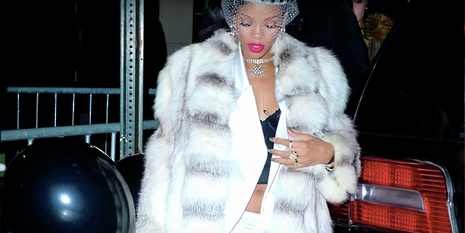Cruelty-free is the future, faux sure
Fashion Editor Ellie Mullett explains why everyone should abandon fashion and beauty products that involve animal exploitation, and switch to cruelty-free alternatives instead
“Beauty is pain”, so the saying goes. Pain for whom though? For the individuals who wax their legs, pluck their eyebrows, and squeeze their pimples, it is most certainly pain. But that pain is deliberate, because the end result makes them feel good, and is therefore worth enduring. However, beauty is also often pain for the animals who are involuntarily involved in the manufacturing process. Whether they are skinned alive for their fur, or used as the (metaphorical) guinea pigs for cosmetics testing, a lot of what goes on behind the scenes is far less beautiful than the finished products themselves.
“Cruelty-free doesn’t mean a compromise on quality or an increase in price, it just means that fewer animals suffer for our benefit”
While real fur has been practically outlawed from the high-street, designer labels continue to use it without hesitation. The list of culprits is depressingly long, with Gucci, Dior, Burberry and Louis Vuitton being just a small sample of the guilty parties. A small bit of skin warrants a hefty price tag, which means a lot must have been spent on the animal’s welfare before it was humanely killed for the sake of vanity, right? Wrong. The animals that are trapped in the wild for their fur will suffer a slow, painful death, and those raised in fur farms will have spent their lifetimes in tiny cages before being brutally killed, should they be lucky enough escape the ordeal of being skinned alive. A far cry from the glitz and glamour of the catwalk their skins end up on, that’s for sure.
Even on the high-street, there has been a recent spate of cases where real fur has been unknowingly sold as faux. This winter, Debenhams sold bags which turned out to contain rabbit fur, and Forever 21 sold a bags featuring charms that made from Angora fur. The suppliers were responsible for this, not the stores themselves (who did also swiftly remove the items from sale), but the question regarding how many other products containing real fur are out there must certainly be raised. And if it’s cheaper to buy real fur than imitation, I dread to think what lives those animals would have lived.

Furthermore, real fur still has a disturbing status-symbol attached to it. It’s expensive (a Fendi pom-pom keychain made from real red fox fur will set you back £490!), which makes it inaccessible to the masses, and it's also seen as historic , as demonstrated by the fact that the ceremonial hats worn by Queen Elizabeth II’s Five Guards’ Regiments are still made from the fur of Canadian black bears, which are shot specifically for the purpose. A-listers are frequently spotted sporting real fur, including Beyonce, Rihanna and Madonna, to name a few, and in 2012, Lady Gaga even defended her decision to wear it by saying: “you see a carcass, I see a museum pièce de résistance.” Kim Kardashian recently pledged only to wear the fur of roadkill, but I’ve yet to see evidence of her scraping dead bunnies off the tarmac, and until I do, I’ll struggle to accept her conviction.
Some people defend their choice to wear vintage fur by saying the garment was made at a time when real fur was more acceptable, but wearing it now only fuels the status-symbol that fur holds. I think the situation differs slightly should you decide to make the move to cruelty-free make-up brands, for the appearance of make-up gives nothing away about the process of production, and discarding a product that is only partially used would create unnecessary waste. Use up your current products, and then move to cruelty-free brands.
Make-up heavy-weights MAC and Benefit are not cruelty-free, as they sell their products in China, where animal testing is required by law. However, Urban Decay, Too Faced and NYX are all totally cruelty free: the latter is the cheapest of the three yet is still great quality, and can be found in the Boots in the centre of town. In terms of face and body care, all of Superdrug’s own brand products are cruelty-free, as is everything stocked by The Body Shop and Lush (if you ever want to check a specific product, here’s a brilliant database). Cruelty-free doesn’t mean a compromise on quality or an increase in price, it just means that fewer animals suffer for our benefit.
I hope that one day, animals will no longer have to suffer in the name of fashion, especially when a fluffy jumper will keep you just as warm as any real skin. In the meantime, if you wouldn’t wear the skin of your pet rabbit or rub chemicals on your dog, its about time that you switched to cruelty-free products too
 News / Clare Hall spent over £500k opposing busway 24 December 2025
News / Clare Hall spent over £500k opposing busway 24 December 2025 Comment / The ‘class’ of Cambridge24 December 2025
Comment / The ‘class’ of Cambridge24 December 2025 News / Caius mourns its tree-mendous loss23 December 2025
News / Caius mourns its tree-mendous loss23 December 2025 Comment / League tables do more harm than good26 December 2025
Comment / League tables do more harm than good26 December 2025 News / Girton JCR publishes open letter expressing solidarity with Palestine25 December 2025
News / Girton JCR publishes open letter expressing solidarity with Palestine25 December 2025









